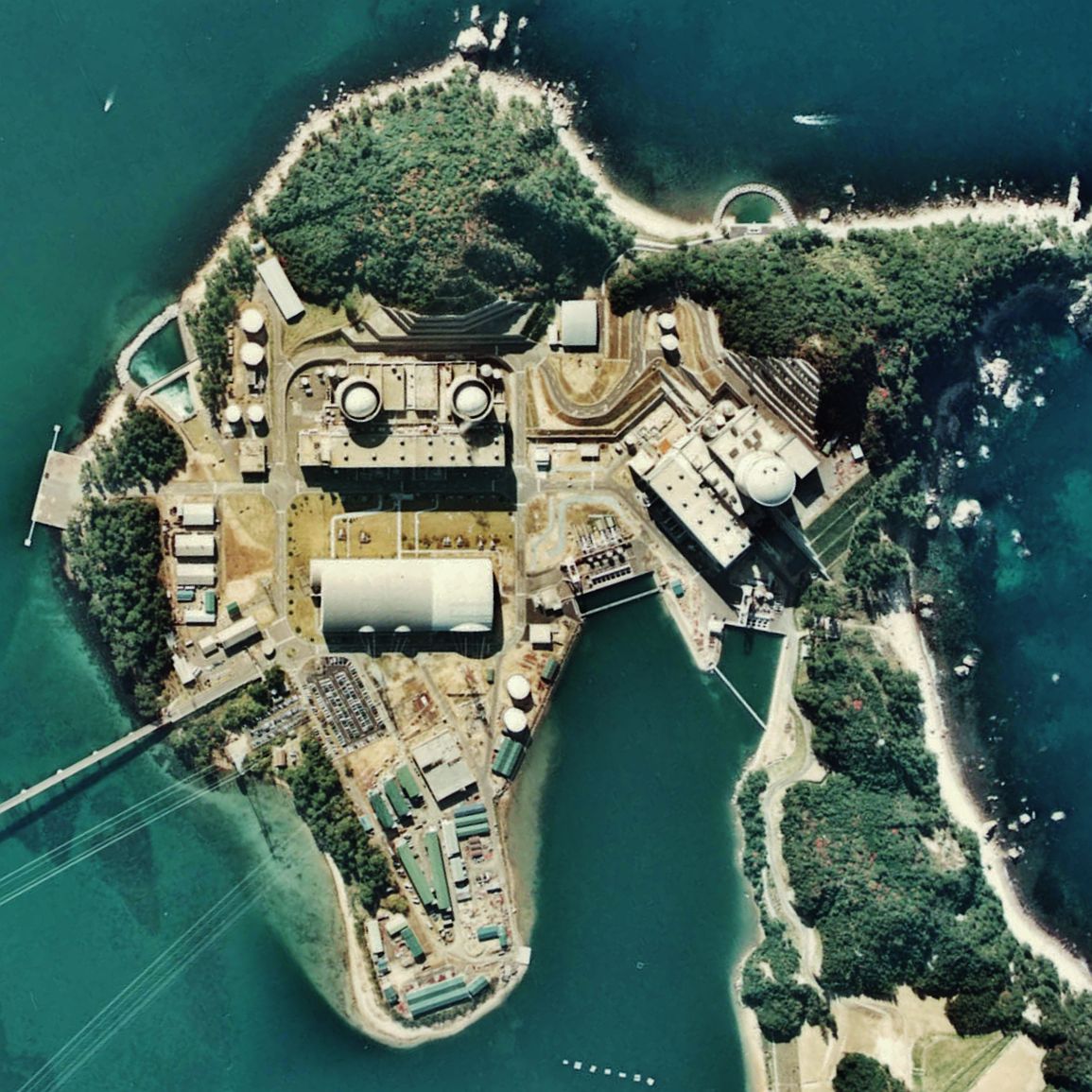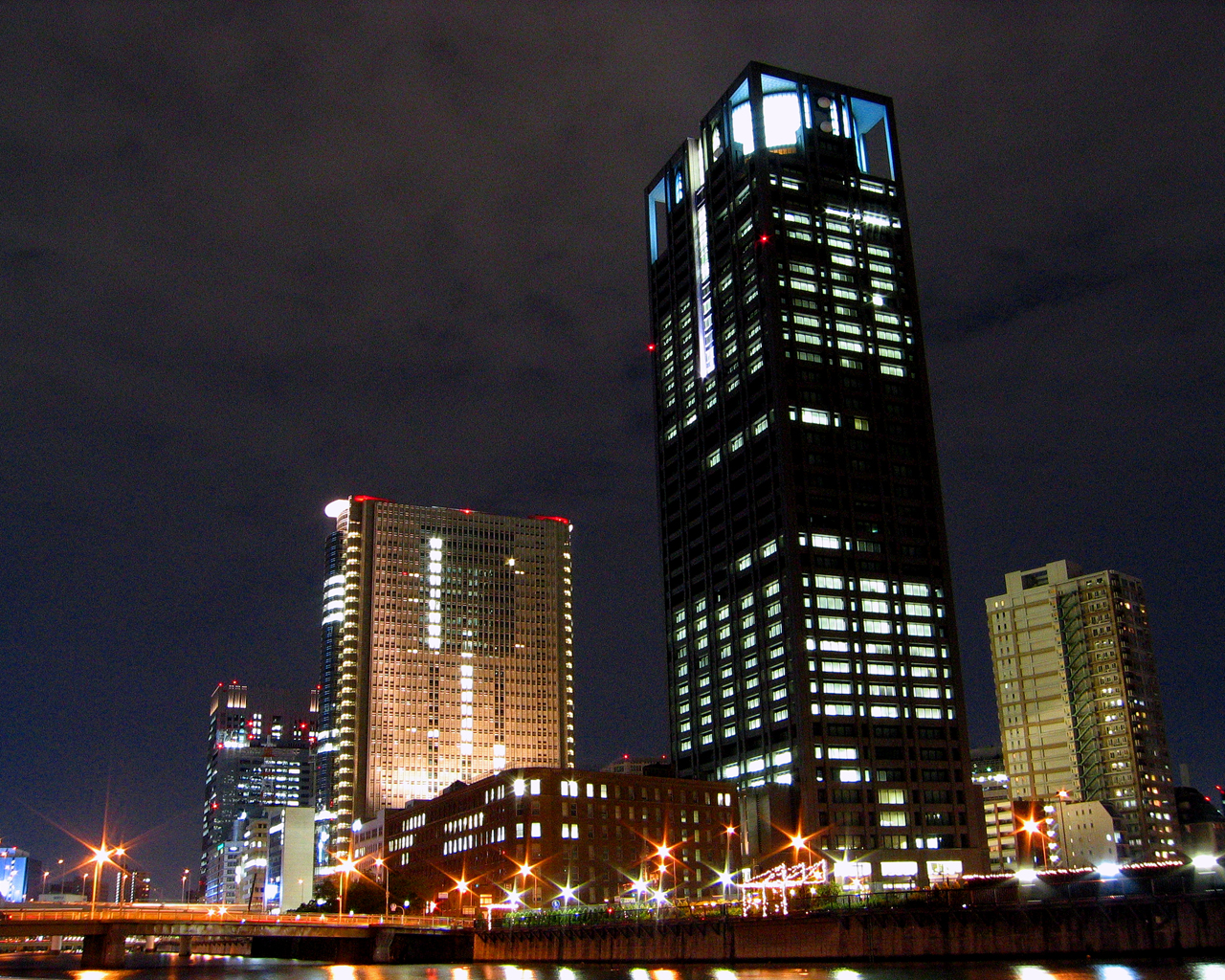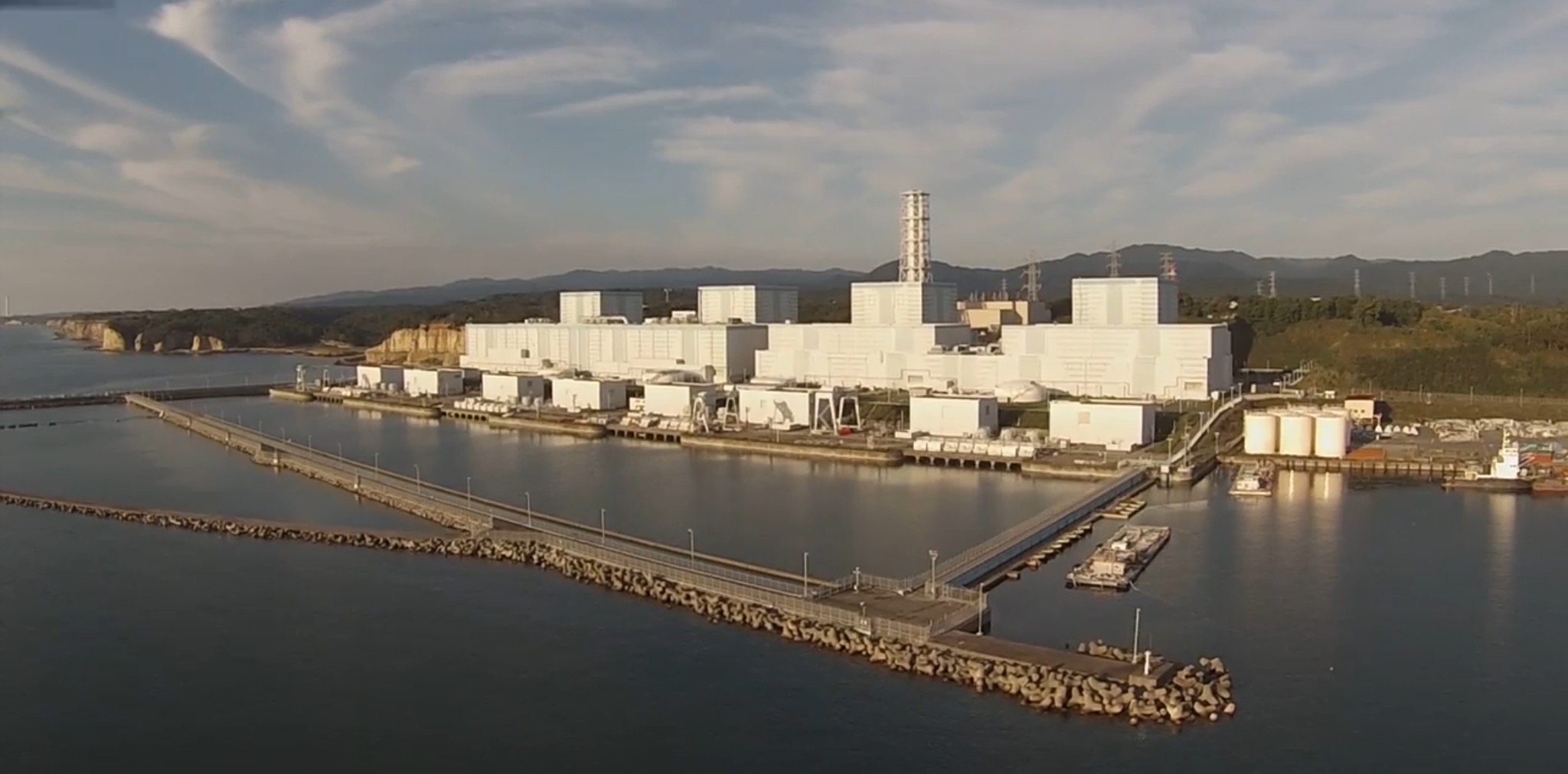|
Mihama Nuclear Power Plant
The is operated by The Kansai Electric Power Company, Inc. and is in the town of Mihama, Fukui Prefecture, about 320 km west of Tokyo. It is on a site that is 520,000 m2 of which 60% is green space. Mihama - 1 was commissioned in 1970. Reactors on site Accidents 1991 accident On 9 February 1991, a tube in the steam generator of Unit 2 ruptured. This triggered a SCRAM with full activation of the Emergency Core Cooling System. The ensuing investigation showed that a fixture designed to suppress vibration to the heat-transfer tube had not been inserted as far it was designed to be, resulting in abnormal vibrations of the tube. The high cycle fatigue, repeated over 100,000 times, led to the pipe rupturing. Eventually, a negligible amount of radiation was released to the environment. 2004 accident On 9 August 2004, an accident occurred in a building housing turbines for the Mihama 3 reactor. Hot water and steam leaking from a broken pipe killed five workers and resulted i ... [...More Info...] [...Related Items...] OR: [Wikipedia] [Google] [Baidu] |
Kansai Electric Power Company
, also known as , is an electric utility with its operational area of Kansai region, Japan (including the Keihanshin megalopolis). The Kansai region is Japan's second-largest industrial area, and in normal times, its most nuclear-reliant. Before the Fukushima nuclear disaster, a band of 11 nuclear reactors – north of the major cities Osaka and Kyoto – supplied almost 50 percent of the region's power. As of January 2012, only one of those reactors was still running. In March 2012, the last reactor was taken off the powergrid. Power plants Kansai Electric Power Company has 164 plants with a total production capacity of 35,760 MW. Nuclear Thermal Hydro Accidents and incidents Mihama accident in 2004 On 9 August 2004, KEPCO reported that five of its employees were killed by a steam burst in the turbines housing building, at the Mihama Nuclear Power Plant in Fukui Prefecture. The burst, according to KEPCO, was due to the neglect of mandated safety checks and the ... [...More Info...] [...Related Items...] OR: [Wikipedia] [Google] [Baidu] |
Takahama Nuclear Power Plant
The is a nuclear power plant located in the town of Takahama, Ōi District, Fukui Prefecture. It is owned and operated by the Kansai Electric Power Company. It is on a site with an area of about 1 km2. The four pressurized water reactors give the plant a total gross electric capacity of 3,392 MW and average yearly production of 22,638 GW·h (averaged on 2006–2010 data). From 2012 to 2016 the plant was shut down most of the time, with only reactor 3 briefly in operation, due to technical problems and opposition from local residents. Unit 3 and 4 were eventually restarted in May and June 2017. Reactors on site History Maintenance in 2012 On 17 February 2012, Kansai Electric Power Co. announced that on 21 February 2012 reactor no. 3 would be taken off the grid for a regular checkup and maintenance. After that date, only two commercial nuclear power plants were still operating in Japan: the no. 6 reactor of TEPCO at the Kashiwazaki-Kariwa plant in prefecture Niigata, whi ... [...More Info...] [...Related Items...] OR: [Wikipedia] [Google] [Baidu] |
Buildings And Structures In Fukui Prefecture
A building, or edifice, is an enclosed structure with a roof and walls standing more or less permanently in one place, such as a house or factory (although there's also portable buildings). Buildings come in a variety of sizes, shapes, and functions, and have been adapted throughout history for a wide number of factors, from building materials available, to weather conditions, land prices, ground conditions, specific uses, prestige, and aesthetic reasons. To better understand the term ''building'' compare the list of nonbuilding structures. Buildings serve several societal needs – primarily as shelter from weather, security, living space, privacy, to store belongings, and to comfortably live and work. A building as a shelter represents a physical division of the human habitat (a place of comfort and safety) and the ''outside'' (a place that at times may be harsh and harmful). Ever since the first cave paintings, buildings have also become objects or canvasses of much artisti ... [...More Info...] [...Related Items...] OR: [Wikipedia] [Google] [Baidu] |
Civilian Nuclear Power Accidents
Civilians under international humanitarian law are "persons who are not members of the armed forces" and they are not "combatants if they carry arms openly and respect the laws and customs of war". It is slightly different from a non-combatant, because some non-combatants are not civilians (for example, military chaplains who are attached to the belligerent party or military personnel who are serving with a neutral country). Civilians in the territories of a party to an armed conflict are entitled to certain privileges under the customary laws of war and international treaties such as the Fourth Geneva Convention. The privileges that they enjoy under international law depends on whether the conflict is an internal one (a civil war) or an international one. In some nations, uniformed members of civilian police or fire departments colloquially refer to members of the public as civilians. Etymology The word "civilian" goes back to the late 14th century and is from Old French ''civ ... [...More Info...] [...Related Items...] OR: [Wikipedia] [Google] [Baidu] |
List Of Nuclear Power Plants In Japan
The following is a list of Japanese nuclear power plants. After the Fukushima Daiichi nuclear disaster, all 17 major plants were shut down. As of 2022, only 6 out of 17 major nuclear power plants operate in the country, operated by the Kyushu Electric Power (Kyuden), Shikoku Electric Power Company (Yonden) and Kansai Electric Power Company , also known as , is an electric utility with its operational area of Kansai region, Japan (including the Keihanshin megalopolis). The Kansai region is Japan's second-largest industrial area, and in normal times, its most nuclear-reliant. B ... (Kanden). References {{Reflist Japan nuclear * Nuclear power stations in Japan Nuclear reactors Japan power ... [...More Info...] [...Related Items...] OR: [Wikipedia] [Google] [Baidu] |
The Japan Times
''The Japan Times'' is Japan's largest and oldest English-language daily newspaper. It is published by , a subsidiary of News2u Holdings, Inc.. It is headquartered in the in Kioicho, Chiyoda, Tokyo. History ''The Japan Times'' was launched by Motosada Zumoto on 22 March 1897, with the goal of giving Japanese people an opportunity to read and discuss news and current events in English to help Japan to participate in the international community. The newspaper was independent of government control, but from 1931 onward, the paper's editors experienced mounting pressure from the Japanese government to submit to its policies. In 1933, the Japanese Ministry of Foreign Affairs appointed Hitoshi Ashida, former ministry official, as chief editor. During World War II, the newspaper served as an outlet for Imperial Japanese government communication and editorial opinion. It was successively renamed ''The Japan Times and Mail'' (1918–1940) following its merger with ''The Japan Ma ... [...More Info...] [...Related Items...] OR: [Wikipedia] [Google] [Baidu] |
Judicial System Of Japan
The judiciary (also known as the judicial system, judicature, judicial branch, judiciative branch, and court or judiciary system) is the system of courts that adjudicates legal disputes/disagreements and interprets, defends, and applies the law in legal cases. Definition The judiciary is the system of courts that interprets, defends, and applies the law in the name of the state. The judiciary can also be thought of as the mechanism for the resolution of disputes. Under the doctrine of the separation of powers, the judiciary generally does not make statutory law (which is the responsibility of the legislature) or enforce law (which is the responsibility of the executive), but rather interprets, defends, and applies the law to the facts of each case. However, in some countries the judiciary does make common law. In many jurisdictions the judicial branch has the power to change laws through the process of judicial review. Courts with judicial review power may annul the laws and r ... [...More Info...] [...Related Items...] OR: [Wikipedia] [Google] [Baidu] |
Fukushima Daiichi Nuclear Disaster
The was a nuclear accident in 2011 at the Fukushima Daiichi Nuclear Power Plant in Ōkuma, Fukushima, Japan. The proximate cause of the disaster was the 2011 Tōhoku earthquake and tsunami, which occurred on the afternoon of 11 March 2011 and remains the most powerful earthquake ever recorded in Japan. The earthquake triggered a powerful tsunami, with 13–14-meter-high waves damaging the nuclear power plant's emergency diesel generators, leading to a loss of electric power. The result was the most severe nuclear accident since the Chernobyl disaster in 1986, classified as level seven on the International Nuclear Event Scale (INES) after initially being classified as level five, and thus joining Chernobyl as the only other accident to receive such classification. While the 1957 explosion at the Mayak facility was the second worst by radioactivity released, the INES ranks incidents by impact on population, so Chernobyl (335,000 people evacuated) and Fukushima (154,000 evacuate ... [...More Info...] [...Related Items...] OR: [Wikipedia] [Google] [Baidu] |
Monju Nuclear Power Plant
was a Japanese sodium-cooled fast reactor, located near the Tsuruga Nuclear Power Plant, Fukui Prefecture. Its name is a reference to Manjusri. Construction started in 1986 and the reactor achieved criticality for the first time in April 1994. The reactor has been inoperative for most of the time since it was originally built. It was last operated in 2010 and is now closed. Monju was a sodium cooled, MOX-fueled, loop-type reactor with three primary coolant loops, designed to produce 280 MWe from 714 MWt. It had a breeding ratio of approximately 1.2. The plant is located on a site that spans 1.08 km2 (267 acres), the buildings occupy 28,678 m2 (7 acres), and it has 104,680 m2 of floor space. An accident in December 1995, in which a sodium leak caused a major fire, forced a shutdown. A subsequent scandal involving a cover-up of the scope of the accident delayed its restart until May 6, 2010, with renewed criticality reached on May 8, 2010. In August 2010 anothe ... [...More Info...] [...Related Items...] OR: [Wikipedia] [Google] [Baidu] |
Japan Atomic Energy Agency
The is an Independent Administrative Institution formed on October 1, 2005 by a merger of two previous semi-governmental organizations. While it inherited the activities of both JNC and JAERI, it also inherited the nickname of JAERI, "Genken" 原研, an abbreviated word for "nuclear research". On April 10, 2007, JAEA officially joined the GNEP alliance. The other members in the alliance are Areva, Washington Group International and BWX. It is expected that the experience gained from the Rokkasho centrifuge enrichment plant will be a key contribution from JAEA. On April 1, 2016, JAEA transferred some of its laboratories to the National Institute of Radiological Sciences (NIRS), and the NIRS body was renamed to the National Institutes for Quantum and Radiological Science and Technology (QST) which includes existing laboratories of the NIRS. In 2018 JAEA estimated it would need about 1.9 trillion yen ($17.1 billion) to decommission 79 facilities over 70 years. Overview *Est ... [...More Info...] [...Related Items...] OR: [Wikipedia] [Google] [Baidu] |
Tsuruga Nuclear Power Plant
The is located in the city of Tsuruga, Fukui Prefecture, Japan. It is operated by the Japan Atomic Power Company (JAPC). The total site area is with 94% of it being green area that the company is working to preserve. The Tsuruga site is a dual site with the decommissioned prototype Fugen Nuclear Power Plant. Construction of two new nuclear reactors is currently planned. However, there have been several delays due to the need for seismic upgrades, even before the March 2011 earthquake. As of 2014, construction has not begun on the two new reactors, although a tunnel has been completed linking the tip of the peninsula with the existing Units 1 and 2 sites. Nuclear reactors on site The Tsuruga 1 reactor is the oldest commercial reactor in Japan. It was shut down for a safety inspection on 26 January 2011. In March 2015 JAPC announced that Tsuruga 1 would be decommissioned. In March 2015 the Nuclear Regulation Authority (NRA) accepted an expert report that concluded the pla ... [...More Info...] [...Related Items...] OR: [Wikipedia] [Google] [Baidu] |






.jpg)

.jpg)